Android vs iOS vs Windows 10 Mobile: Which mobile operating system is best?
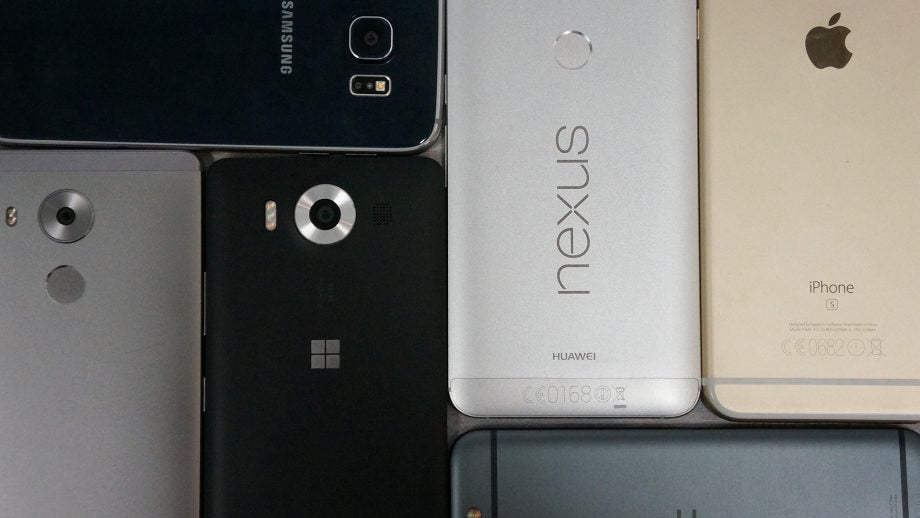
Android vs iOS vs Windows 10 Mobile: Which OS is best?
More important than any hardware concerns when shopping for a new smartphone is establishing which OS is right for you.
Are you a die-hard Apple fanboy? Does Android send you all Googley eyed? Or is Windows more your thing? Maybe it’s time you stepped outside your comfort zone and tried something new. You never know, you might just like it.
We’ve thoroughly tested out each of the big three (or big two-and-a-half as the case may be at present) to see how they stack up – iOS 9, Android Marshmallow, and Windows 10 Mobile. From notifications to apps, quick settings to custom skins – we’ve tried it all.
This is the ultimate smartphone operating system battle. Now, get ready…
Android vs iOS vs Windows 10 Mobile: Design and Interface
In the many years since Android, iOS and Windows for Mobile (as it used to be called) have been powering devices everywhere, the way they each look and function has changed significantly.
Related: Samsung Galaxy S7 vs S6
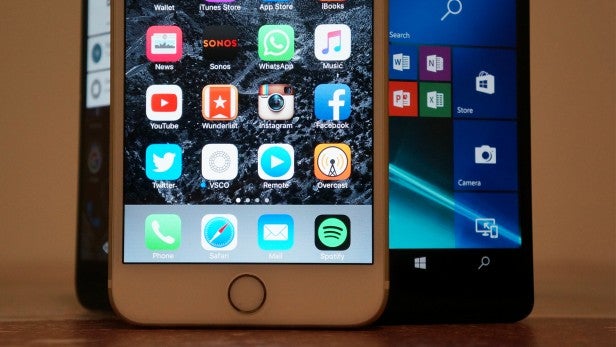
Actually, let us rephrase that. Android and Windows Mobile have both gone through numerous makeovers, yet Apple has kept iOS looking fairly similar since its 2007 launch.
Android got its biggest design upgrade in 2014, with the introduction of Lollipop 5.0. This brought a whole new ‘Material Design’ look and feel that cranked up the number of animations and altered almost every part to give it that extra bit of gloss.
Android 6.0 Marshmallow, the newest version, continues with the basic look of Lollipop. Most of its changes relate to the back end.
The basics of Android are the same as they’ve been for years, though. You’ve got a lock screen that displays notifications, then, once unlocked, you’ve got an app-centric home screen. And there’s an app drawer for storing everything else you’ve downloaded.
iOS follows this blueprint too, though Apple ditches the app drawer, instead giving you just the app icon-filled home screens. It’s the simplest of the three, and it’s difficult to argue with its usability – unless you have loads of apps, in which case a provision like Android’s and Windows 10’s app tray would be useful.
Windows 10 Mobile takes a completely different design path from the competition. Its homescreen is a tiled interface, with resizable tiles flipping over to display more information about that app. You can swipe to the left to get to all your apps and just like iOS and Android, you can group apps together in folders.
Live Tiles give you little nuggets of information without forcing you to open an app – the BBC Sport app, for example, gives you a scrolling view of breaking news throughout the day. This glanceable style can also be applied to Android, where optional widgets can be added to the homescreens. Widgets have been a mainstay on Android since the very first version.
Related: iPhone 6S vs Galaxy S7
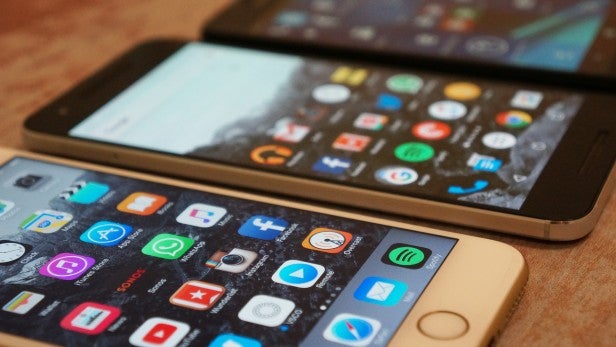
Apple took until iOS 8 (it’s currently on iOS 9.2) to add something similar, though it’s not as well integrated as on the other platforms. They’re called Extensions, and rather than sitting on the homescreen they’re found in the drop-down Notification Centre, but they work pretty much the same as Live Tiles or widgets.
We’d like to see Apple give us a bit more freedom over where these handy information gatherers could sit, but the Cupertino company’s reluctance to switch up the overall look of the homescreen makes us think that will likely never happen.
All three also have a couple of neat design tricks up their respective sleeves when it comes to getting more from the home screens. A quick swipe down from the top of each brings up a notification shade, grouping together all your emails, messages and calls, while both Android and Windows give you quick settings here too. These let you easily turn off Bluetooth, Wi-Fi and the like.
Apple added a similar settings shortcut feature in iOS 7 with Control Centre. This time you swipe up from the bottom of screen to get direct access to a torch, a brightness slider, media controls, Wi-Fi, and so on. We’re big fans of Apple’s approach here – it’s become one of our most commonly used functions in iOS.
Now, there’s one big thing that separates Android from Windows 10 Mobile and iOS and that’s skinning. We’ll talk more about this later, but it basically gives OEMs (Samsung, HTC, LG etc.) free reign to turn Android into whatever they want. What Google says is how Android should look in the Nexus 6P is not necessarily what you’ll get if you pick up a Samsung Galaxy S6 or HTC One M9.
Windows 10 Mobile has come a long way since the Windows for Mobile days and it’s rather good looking – we think anyway. It’s actually very similar to Windows Phone 8.1 before it. But it still falls behind the other two. Android is our favourite design-wise, especially when it’s presented the way Google intended.
Android vs iOS vs Windows 10 Mobile: Apps – Stock and downloadable
How the operating systems looks and handles is important, but it arguably pales in comparison to the real difference maker between all these three: the apps.
Apps and app stores can make or break an operating system. You can have a gorgeous look, slick feel and, as Microsoft has found with successive Windows mobile platforms, still fail if your app situation is not up to par.
iOS, Android and Windows 10 Mobile each have their own storefront – iOS has the App Store, Android has Google Play and Windows 10 Mobile has the Windows Store.
Related: Best Android games
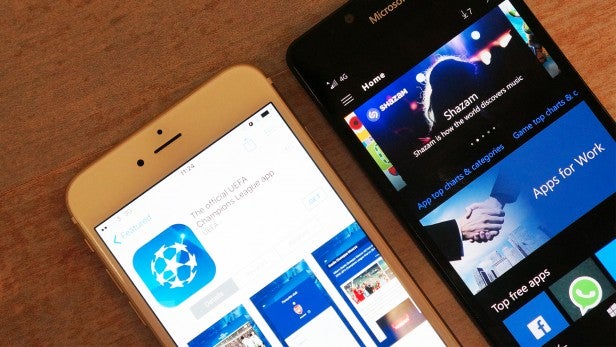
A few years ago, Apple dominated the app space. It had the best apps, both in terms of functionality and design. It also had the ‘triple-A’ games, and overall developer support was top notch. If a new app or app update was coming, it would most likely hit iOS first.
The story has changed somewhat in recent years, but not entirely. Android now has pretty much all of the big-name apps, and new ones are typically launched more or less simultaneously with iOS (or not long after). Some even make their debut on Android, owing to Google’s more relaxed approval process.
Many triple-A games are also seeing an equal release footing between iOS and Android, though iOS still has more of an advantage here than with regular apps. That can largely be put down to the persistent issue of Android hardware and software fragmentation, which poses more of a challenge for game developers due to the added performance demands.
There’s still definitely an iOS bias here. Spotify and Instagram, for example, both tend to trial new features with their iOS apps before bringing them to Android later.
And then there’s Windows 10 Mobile. Ah, Windows 10 Mobile. It’s certainly safe to say that in the app landscape, Microsoft’s baby currently lags a distant third. Make no mistake, there are plenty of apps on Windows 10 Mobile and the number of big players offering something for the platform is growing. Spotify, Dropbox, Facebook, Twitter, Vine and Instagram are all present and correct, and that covers a lot of the apps people use on a daily basis. But such apps frequently lag behind the top two platforms when it comes to receiving updates, and they often lack fairly fundamental features. Developers seem to release an app, mention it now supports Windows 10 Mobile and then turn their attention back to iOS and Android.
Windows 10 Mobile offers hope in that it’s built on the same core as Windows 10 itself. The main advantage of this is that it’s possible to create universal apps that works in both the desktop and mobile environments. The company also put some work into making it easier to port apps from Android and iOS to Windows 10 Mobile, but the main initiative is those Universal Apps.
Related: Best sim-only deals
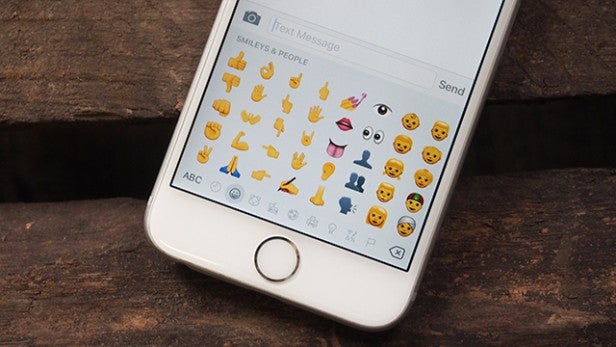
That’s the idea, anyway. In practice, the Windows 10 app ecosystem has gotten off to a slightly shaky start. Developers have been slow on the uptake (perhaps burned by previous Windows and Windows Phone systems), and those Windows 10 Universal Apps that have been made haven’t always been of the best quality.
But it’s still early days for Windows 10, and Microsoft seems determined to stay the course. This is supposed to be “the last version of Windows”, after all. From now on, Windows will be a service that’s constantly and incrementally improved, and there’s a clear path to ensuring a well-supported mobile ecosystem within that.
All we need now is a few more decent apps and some compelling Windows 10 Mobile hardware (a Surface Phone, maybe?), and iOS and Android might have to think about glancing back for a second.
Built-in apps also make a big difference to how the operating system functions. Many Android OEMs bake in their own apps, but Google’s suite of core apps – Gmail, Calendar, Photos, Maps – are all fantastic. They’re well integrated, slick looking and work every time. You can also grab them all, apart from Photos, if you’re running iOS.
Apple’s default apps for iOS are spartan in design terms, but they’re a good choice if you’re heavily tied into Apple’s ecosystem. Notes will sync back to your Mac, you can beam Map directions to your phone and tap out an iMessage (free messaging between iOS and OS X devices) on your desktop. Unlike on Android, you can’t set which apps are your default, which also means you’re stuck with the Apple-provided phone and messages apps for handling calls and SMS messages.
Related: Best mobile deals
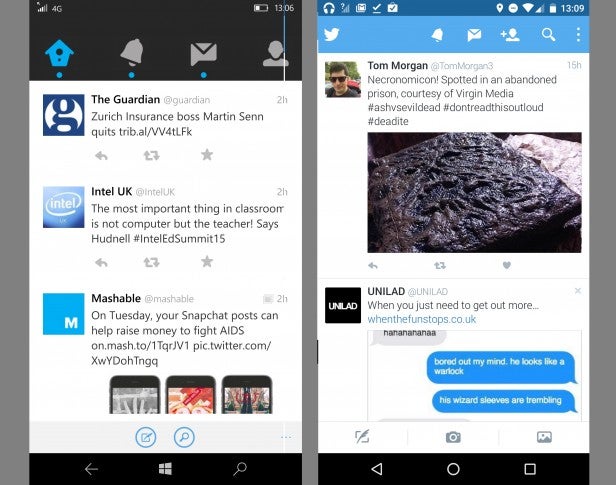
We do prefer Google’s design language over Apple’s though. It’s just got a bit more about it. It’s fresher, sleeker and not quite so bare. There’s a balance to it, where iOS feels like all of the core functionality has been stacked up in the margins.
Windows 10 Mobile’s built-in apps are generally a big improvement over the threadbare offerings of Windows Phone 8.1, particularly in terms of the Edge web browser and Outlook email app. But there’s a glaring problem when comparing it to the other two platforms: both Android and iOS have access to most of Microsoft’s key apps. What’s more, those apps are of a really high quality, often outshining the equivalent experience on Windows. We’re thinking particularly of the latest Outlook app, but there’s a case to be made for Office too.
Android vs iOS vs Windows 10 Mobile: Features
One of the killer features in iOS is a fairly recent one, Continuity. This ridiculously handy addition to iOS 8 lets your Apple-branded devices talk to each other, and ensures their core apps are all hooked up. You can ‘Handoff’ stuff from your phone and table to your Mac, and vice-versa, so a text message can be started on your iPhone and finished off on your Mac. You can also take calls on your MacBook if your phone is out of reach.
If you’re fully entwined in the Apple world then it’s a great feature. We’ve been using it for well over a year now, and 80% of the time it works flawlessly. Sometimes calls hang a bit too long on the Mac, still ringing when you’re deep in conversation, and there are times when messages don’t appear, but it’s rare.
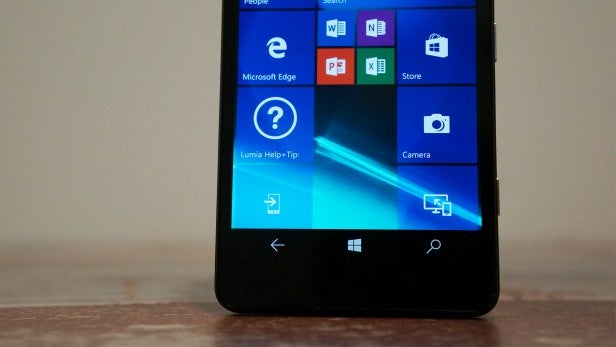
There isn’t really a similar system-wide feature on Android just yet. Samsung’s Flow app offered to provide something comparable, but it remains in a pretty limited beta state for now, and it inherently lacks the intuitive, system-spanning scope of Apple’s solution. We’ll have to wait and see if Samsung can make anything of this, but it doesn’t have a great track record when it comes to pushing new services. ChatOn, anyone?
Perhaps surprisingly, Windows 10 Mobile also lacks a cross-platform feature to match Apple’s Continuity. Instead, it has a feature called Continuum that looks cool in demos, but seems to have limited real world value – at least in its present iteration, on current hardware.
Continuum lets you directly plug your phone into a monitor and hook up to a keyboard and mouse to get a PC like interface. This is only for a couple of core apps, however – true PC-like multitasking and advanced applications are a no-go.
However, reports suggest that the next major Windows 10 update, which could be headed our way mid-2016, will bolster the OS’s cross-platform capabilities. Like with Apple’s Continuity, you should be able to start an email on your PC and continue it on your Window 10 Mobile device, and to make and receive calls on your computer.
Both Android and iOS have free messaging apps – Hangouts and iMessage. Google’s Hangouts it a little more open and can be used on other platforms (iOS included) and the web, but rumour has it that it will be losing its current SMS integration in a future update. Even with it, iMessage definitely has a wider feature set and a slicker layout.
Windows 10 Mobile users have Skype, of course, which has a similar chat function. Skype is also testing out a unified messaging app, like iMessage and Hangouts, but for now Windows 10 Mobile utilises a standalone messaging app for SMS messages.
Fitness features are also becoming more and more common on phones. Both Google Fit and Apple Health work as a sort of fitness framework service, recording and storing health data for separate certified fitness apps and devices to contribute to. Both also tie in with their respective companies’ wearables, whether that be the singular Apple Watch or the more varied Android Wear market.
Some Android OEMs like Samsung have also added heart rate monitors to their smartphones to give that extra fitness boost. Microsoft Health works in a similar way and connects with the Microsoft Band, giving you specific training regimes and so on.
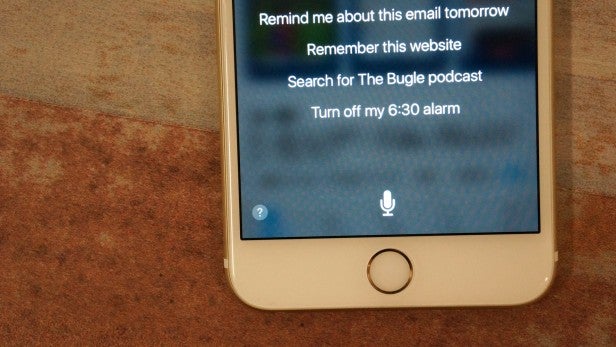
Android vs iOS vs Windows 10 Mobile: Siri vs Google Now vs Cortana
Another key feature of each of these operating systems is its ‘virtual assistant,’ and it’s becoming an increasingly important battleground. We’ve come a long way since dodgy voice control on phones, with Siri, Google Now and Cortana taking pride of place on iOS, Android and Windows 10 Mobile respectively.
Let’s kick off with arguably the best – Google Now. Now’s skill is it feeds you handy information throughout the day, both from apps you have installed like Spotify and from the web. If you’re near a bus stop, for example, it will show you upcoming departures. Is the football team you’ve previously searched for playing? Now will let you know the score. It works fantastically, and with Google opening up the APIs to developers, it also incorporates third party apps in its operations.
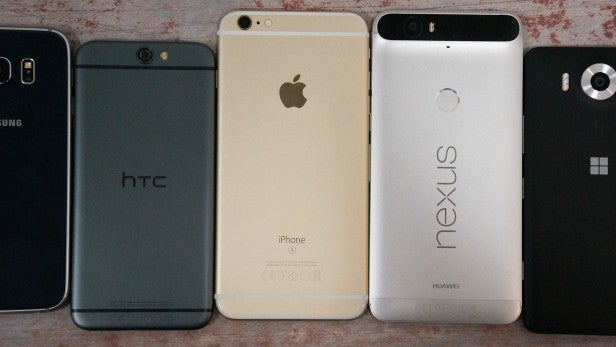
More recently, in Android 6.0 Marshmallow we’ve received Google Now on Tap. This provides contextual information based on what’s on the screen at the time. Looking at an email from a friend about a film you want to go and see? Google Now on Tap will surface relevant information on that film, including local viewing times, simply by pressing and holding the home button.
At present, the idea of Google Now on Tap is better than the execution – it’s a little haphazard with its results. But Google is definitely on to something here.
Siri is accurate in understanding what you’re saying, and it feels more like an actual assistant than Google Now, but it’s a little more limited in terms of the information it can provide. It’s improved massively since iOS 9, though.
You can ask it to set an alarm, start a timer, listen to what song is playing, and set a reminder as usual, but it now goes further. Like Google, Apple has integrated its personal assistant deeper into the OS.
Swiping right from the homescreen now brings up Siri’s suggestions for contacts and apps you might want to use, as well as a universal search field and the latest Apple News stories. Meanwhile the normal voice-activated assistant can now pull out photos from specific times or countries, while the Spotlight universal search system now incorporates third party apps.
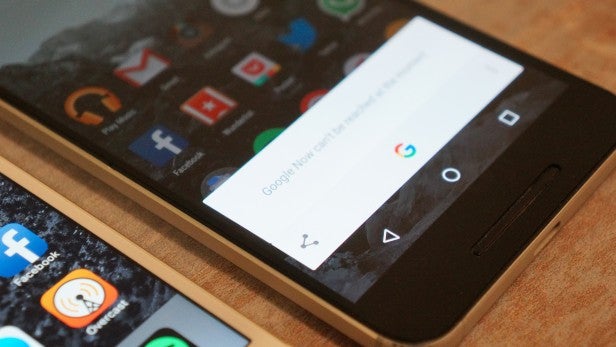
Cortana, named after the character in the Halo game series, feels like a half-way point between Siri and Google Now. It’s got some of the PA-like personality (for want of a better word) of the former and some of the contextual smarts of the latter. Its big thing is noting your personal preferences and moulding its provisions around those.
In real-world usage, it can name that tune, spew out news in the morning, dictate messages, and set reminders with the best of them, as well as being able to smartly remind you of flights and local cinema listings.
Android vs iOS vs Windows 10 Mobile: Biometric security
Both Apple and Google have gone with fingerprint-sensing technology to help secure their latest mobile operating systems. Apple went first, introducing Touch ID authentication with iOS 7, while Google baked it into Android 6.0 Marshmallow.
In both cases, compatible smartphones will let you gain access with a light touch of your finger on a sensor rather than inputting a password or pattern. Both systems work extremely well in our experience.
On Windows 10 Mobile, Microsoft has gone a slightly different route. While it supports fingerprint sensing technology, the first Windows 10 Mobile phones instead feature Windows Hello. This employs iris-scanning technology to secure your phone, providing a more unique and thus more secure biometric security measure.
However, at this point in its development, Windows Hello seems to be a lot less practical than Touch ID and Google’s fingerprint system. You have to hold the phone fairly close to your face for it to work, and it’s a little awkward to use in public spaces or when walking along.
Android vs iOS vs Windows 10 Mobile: Notifications
If there was an area where a clear winner is standing tall, then it’s in how notifications are handled. Android leads the way here, by a mile. Or two.
Android notifications were spruced up in Lollipop (which is still what most users will be on), putting them right on your lock screen and making them better than ever. Long press on one and it’ll show you the app it’s coming from, swipe down with two fingers and certain ones are actionable. You can quickly reply to an email, share a screenshot, delete a text or save a news article.
The notification panel on Android is also the cleanest of the three, highlighting separate notifications in cleanly defined boxes that sit over whatever you’re doing.
SEE ALSO: HTC One M9 review
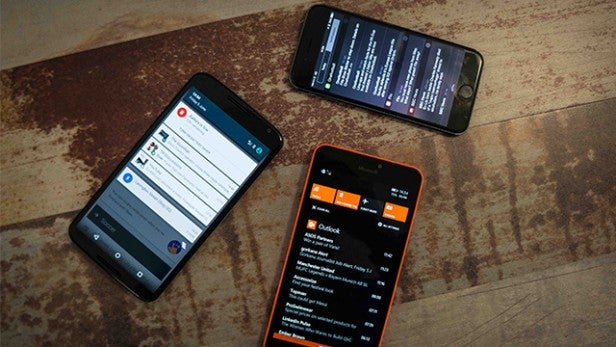
iOS has some similar ‘actionable’ qualities, but they’re far more limited. Having said that, developers can now add quick reply functionality to their messaging apps, which means that you can reply to messages from within Notification Centre, without having to boot up the app itself. It used to be an iMessage-only feature, but no more.
It’s still too difficult to take in an manage all your notifications in iOS, though. Its buttons are small, there’s no ‘dismiss all,’ and the presence of the secondary Today menu alongside Notifications simply doesn’t feel intuitive.
Windows 10 Mobile’s Action Center falls somewhere between iOS and Android, with the expandable shortcut toggles of the latter (we dig the ability to jump to the appropriate settings menu with a long press) and the limited quick responses of the former.
Android vs iOS vs Windows 10 Mobile: Customisation
Pick up a number of iOS or Windows 10 Mobile devices and chances are they’ll all look fairly similar. Yes, icons will be different and colours & wallpapers might be different, but thanks to very strict customisation options, both can’t be pimped out and altered by the user.
Android, on the other hand, is completely the opposite.
The main load of customisations for Google’s OS comes from OEMs, or the companies that actually make the handsets. Samsung has TouchWiz, HTC has Sense, and so on. Each of these completely alters Androids look and feel, adds in an array of new features and gives each device a unique, if not always better, look.
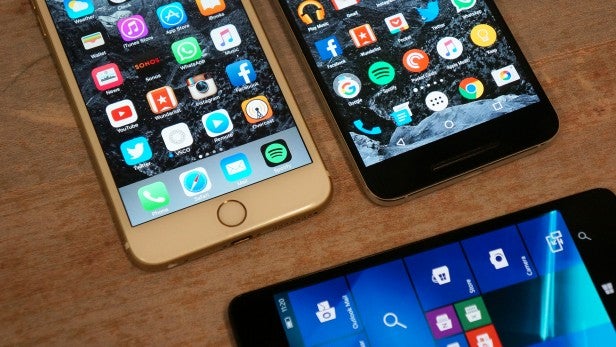
Thankfully, as Android has developed its own appealing style, these skins have somewhat lessened in severity. Even Samsung’s latest iteration of TouchWiz is much lighter and less overbearing that the version used on the Galaxy S5.
Android users can also install custom launchers, separate icon packs and numerous widgets to add even more personality to their devices. One of these is Google’s own Google Now Launcher, which gives your phone a stock Android feel.
Meanwhile, those aforementioned Android widgets come in a range of shapes and sizes, allowing you to transform the look and function of your phone’s home screen.
With iOS, customisation stalls at changing the wallpapers, while Windows 10 Mobile goes the extra step in letting you alter the size of its Live Tiles. They’re both heavily curated operating systems compared to Android.
Android vs iOS vs Windows 10 Mobile: Connected devices
Whether they’re for you or not, wearables are here and by the looks of things, here to stay. Making the choice about the operating system you go might now rest on what watch or fitness accessory you want to pair with it, at least partially.
So, what do the three offer?
Android Wear is the eldest of the three. Designed for wearables of all shapes and sizes, though currently just available on smartwatches, Wear is effectively an extension of Google Now. Instead of just buzzing your wrist with notifications (though it does still do that) the OS displays relevant Now cards and brings up timely information when it thinks you’ll need it. You need an Android device to get the most out of it, though there is also limited iOS compatibility.
SEE ALSO: Apple Watch vs Android Wear
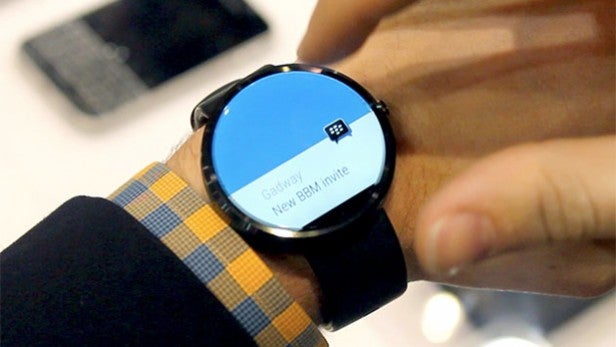
Apple’s first wearable, the Apple Watch, didn’t impress us overly when it launched, and a sizeable update to WatchOS 2.0 has done little to improve our view. It has plenty of promise, and there’s plenty of app support already, but Apple has simply tried to do too much. The OS is confusing, cluttered, and sluggish, without really giving you a good reason to use it ahead of your iPhone.
Microsoft hasn’t yet expanded its Windows 10 OS into a wearable form, but it’s fitness accessory, the Band, does run a lightweigh OS with Cortana support and a Windows-esque look.
In truth, we’re not particularly taken with the smartwatch efforts of any of these companies right now. Android Wear wins out for sheer range and support, while the Apple Watch has the larger number of features and the best integration for iPhone users, while Microsoft hasn’t so much turned up to the party as sent a video message saying ‘hi’.
SEE ALSO: Apple Watch review
Android vs iOS vs Windows 10 Mobile: What about tablets?
iOS on phones and tablets is almost exactly the same, though Apple has shown signs that it’s trying to optimise its OS to make the most of the larger screen real-estate. Split-screen multitasking is now here, catching up with a similar feature on some Android tablets, while Apple’s stock apps spread out effectively. iOS also gets it right when it comes to third party tablet-specific apps, which is something that’s still lacking on Android.
While Gingerbread gave Android a dedicate tablet look, Lollipop brought it back in line with the phone. So if you’re familiar with one, you’ll easily pick up the other.
No one has ploughed more effort into a tablet OS than Microsoft over recent years. Put simply, Windows 10 for tablets is Windows 10. The likes of the Surface 4 Pro are fully capable laptops rendered in tablet form. It seems the company has abandoned its simpler Android and iOS-rivalling Windows RT efforts for now, and we can’t say we miss it.
Just like on phone, Android slate makers can forever tinker with the software. That gives us a wider variety of devices for different situations. Want a bigger screen? Samsung will sell you a 12-inch display toting one. Something smaller? Or cheaper? Or with a keyboard? They’re all available.
Both Google and Apple have attempted to emulate Microsoft’s Surface family of advanced, super-sized tablets, with the Pixel C and iPad Pro respectively. Neither is as good as the Surface Pro 4, however, and that’s largely down to the fact that Microsoft uses full-powered OS built especially for the hybrid form factor. iOS and Android, meanwhile, feel like they’re being stretched to fit.
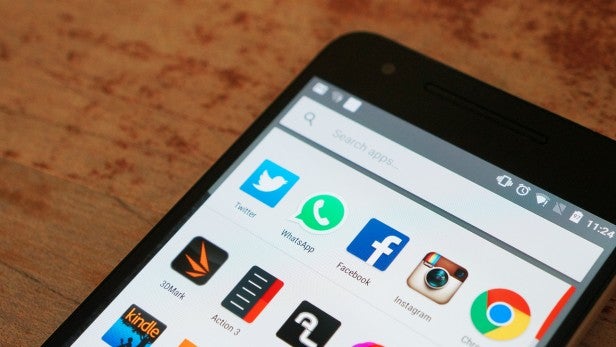
Android vs iOS vs Windows 10 Mobile: Verdict
We could sit here and talk about the pros and cons of each of these operating systems until we’re running Android T: Toffee Crisp and iOS X, but we still wouldn’t be able to come to a decision on which is best.
The answer is that each has its quirks, plusses and minuses. Things we love, things we hate and things we manage to get over. iOS has better apps, great support for other Apple devices and an easy to use UI.
Android wins out with far better notifications, the fantastic Google Now, awesome customisation potential, and a wide variety of available devices.
Even Windows 10 Mobile has a unique look, handy Live Tiles, and the potential for a seamless cross-device experience with your Windows 10 PC.
Want our view, based solely on the stand-alone quality of the OS? We’d probably plump for Android. It’s excellent at several things and pretty good to adequate at the rest. It has awesome notifications, plenty of apps and a gorgeous user-interface.
Of course, stock Android is still a relative rarity, and there’s definitiely something to be said for Apple’s seamless overall package of attractive hardware, tightly integrated software, and peerless after-sales service. Overall, if you go with a good stock Android phone or any recent iPhone, we doubt you’ll regret your OS choice.
(apester:56c447a3b6c51fb652db929e)
What about the rest?
Since we wrote the first edition of this piece, BlackBerry has all but thrown in with Android and left the future of its own BB10 OS in serious doubt.
Amazon’s Fire Phone, running Amazon Fire OS, has spectacularly flopped and has been discontinued. We likely won’t be seeing another Amazon phone any time soon.
Firefox, too, has killed off its own Firefox OS for mobile phones. Yes, there was such a thing.
So you see, if you’re shopping for a new smartphone, there really are only the three realistic options right now – and that’s being rather kind to Microsoft in predicting that it might be able to turn its stuttering Windows 10 Mobile effort into a contender.


